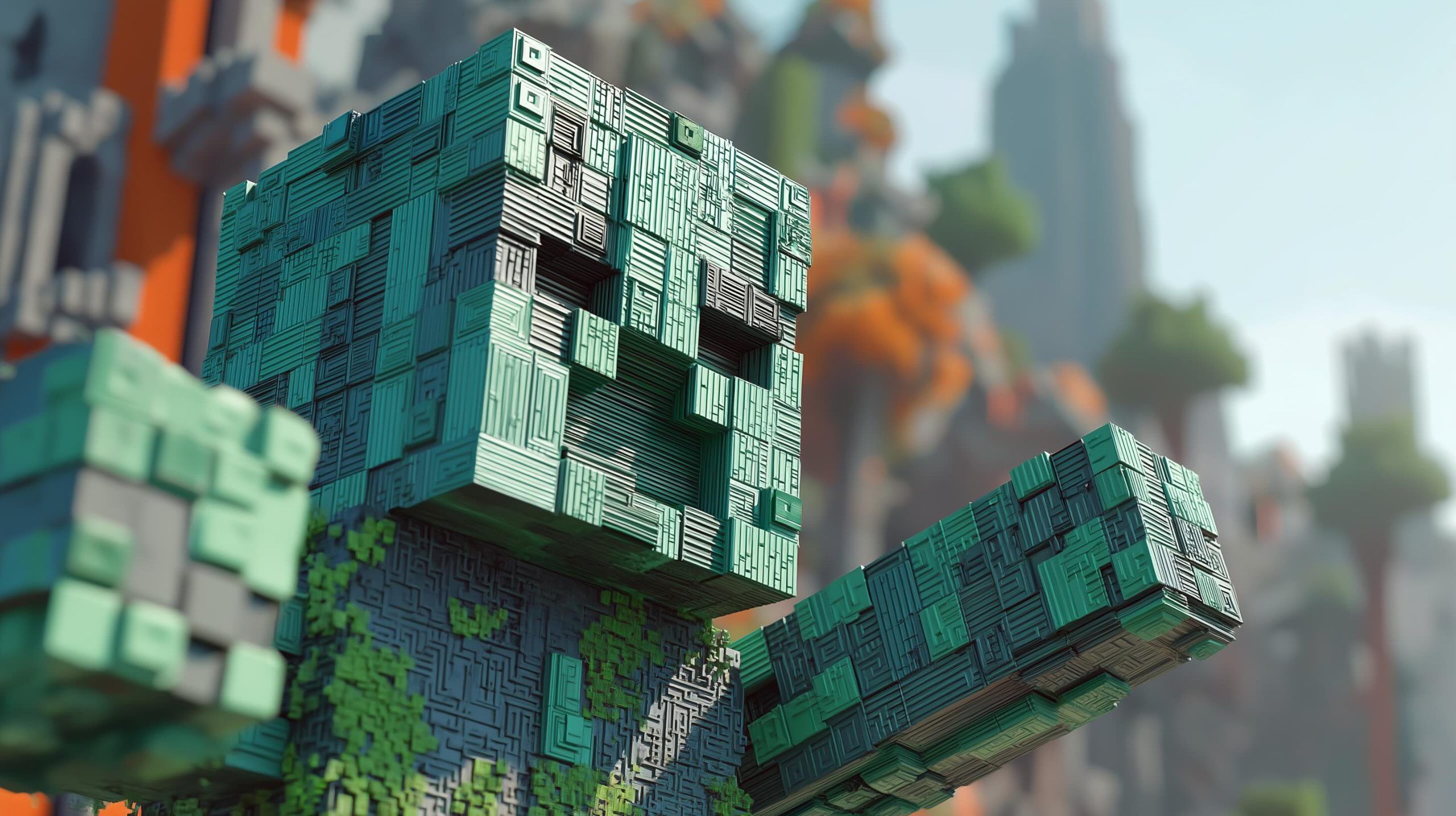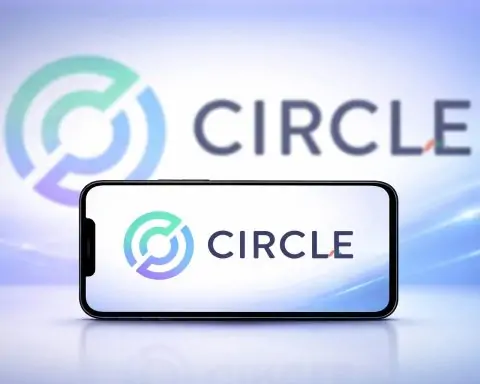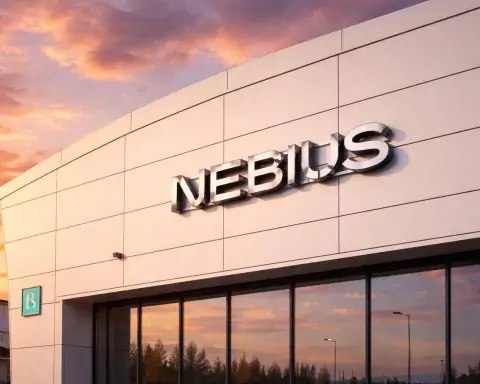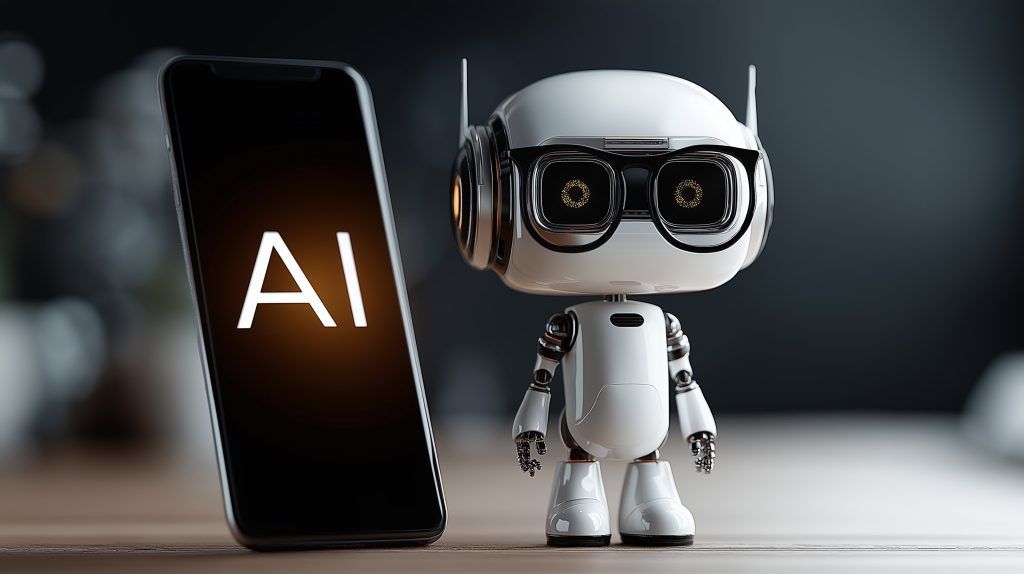- In 2016, Microsoft Research launched Project Malmo, an open-source AI experimentation platform built on top of Minecraft.
- Around NeurIPS 2019, MineRL released an OpenAI Gym interface for Minecraft with a large dataset of human gameplay and the flagship ‘Obtain Diamond’ task.
- In 2022, OpenAI trained a Video PreTraining (VPT) model on 70,000 hours of YouTube Minecraft videos, enabling the agent to craft wooden and stone tools and a diamond pickaxe after 24,000 actions.
- Baritone is an open-source Minecraft bot with advanced pathfinding, using an A-like search and reportedly 30× faster path calculation than its predecessor.
- In early 2025, Ryan Boulds built a 32-bit redstone computer inside Minecraft using over 1.1 million blocks to implement adders, logic gates, and memory registers.
- In 2023, Voyager connected GPT-4 with Minecraft via MineDojo to create a lifelong-learning agent that generates Python code and learns to build, fight, and explore without explicit preprogrammed behaviors.
- In 2024, Microsoft announced Copilot for Gaming AI to be integrated into Minecraft, acting as an in-game assistant that can analyze inventory and guide crafting while keeping observations on-device.
- MineRL BASALT competitions ran from 2021 to 2022 and focused on open-ended tasks like Build a village house or Make an animal pen, evaluated by human judgment rather than numeric rewards.
- By 2023, mods like AIMobs enabled real conversations with mobs using GPT-powered dialogue, with ChatGPT NPCs expanding villager dialogue trees.
- By mid-2025, Voyager and other MineRL-style agents show multi-task and multi-agent progress, with the best agents collecting over three times as many items and exploring twice as far as earlier baselines.
Minecraft has quietly become a hotspot for artificial intelligence (AI) innovation – both within its blocky game world and in cutting-edge research labs. In this comprehensive overview, we’ll explore how Minecraft’s in-game AI systems work (from Creeper pathfinding to villager behavior and even redstone contraptions), the official AI research platforms built on Minecraft (like Microsoft’s Project Malmo and the MineRL environment), and the community-made mods and projects pushing the envelope. We’ll also see how Minecraft serves as a testbed for machine learning (ML) and reinforcement learning (RL), and highlight the latest developments and expert insights on AI in Minecraft as of 2025. Grab your pickaxe – it’s time to dig into the world of Minecraft AI!
In-Game AI: Mobs, Villagers, and Pathfinding
Minecraft’s AI may appear simple, but under the hood each mob and villager follows a set of programmed behaviors that bring the game to life. Hostile and passive mobs have basic decision-making routines: for example, most mobs wander randomly when a player is nearby and avoid fatal drops. Many have a built-in pathfinding system so they can navigate around obstacles toward targets or destinations. This is why a zombie can zigzag through a maze of blocks to reach you – the game uses algorithms (akin to the A search algorithm) to chart a walkable path. Mobs also have rudimentary senses: most can detect players within 16 blocks and will give chase if hostile, or flee if passive. They won’t walk off high cliffs either, thanks to fall-damage awareness. In short, each mob type has a script: creepers sneak up and explode, skeletons maintain distance and shoot arrows, spiders climb walls, etc., all governed by pre-defined AI rules.
Villagers, on the other hand, exhibit more complex behavior that simulates a little society. Villagers wake up and follow daily schedules: working at their job site (e.g. a farmer at a composter or a librarian at a lectern), mingling at a central bell in the afternoon, then returning to their beds at night. Their AI includes pathfinding back to the village – if a villager wanders too far, it will try to “go home” by moving toward the village center (defined by bells/beds). Villagers can breed when certain conditions are met (like available beds and enough food), and even cooperate to spawn Iron Golems for defense if the village is threatened (for example, if zombies attack or a raid occurs). During a raid, you might see villagers rush to ring the bell and hide, demonstrating their panic response coded into the AI. Each villager’s logic also handles trading with players and gossiping (which affects prices and “popularity” with the player). While villagers sometimes behave ineptly (getting stuck on simple obstacles or doors), their underlying AI attempts to simulate a community with jobs and safety instincts.
Pathfinding is a critical part of Minecraft’s AI. Both mobs and villagers use pathfinding to move around complex terrain. The game’s pathfinder considers the 3D grid of blocks and finds a route to a target, avoiding lava, drops, and other dangers. Minecraft’s developers have continually tweaked this system – for instance, mobs still struggle with open trapdoors or certain fences, but generally can navigate around water or climb gentle slopes to pursue the player. (Indeed, players exploit pathfinding quirks to build mob traps or “iron farms” that lure mobs or golems in predictable ways.) The consensus is that Minecraft likely uses an A-like algorithm for pathfinding, balancing efficiency with the blocky world’s complexity. The result isn’t perfect, but it allows zombies to swarm castles and cows to find open pastures without explicitly pre-programming every possible movement.
Redstone: Minecraft’s Automation Engine
No discussion of Minecraft and “AI” is complete without redstone, the game’s built-in logic and automation system. Redstone behaves like electrical wiring, enabling players to create circuits, switches, and even basic computers within the game. Clever players have harnessed redstone dust, torches, repeaters, and other components to design everything from automatic farm machines to fully functional calculators. Essentially, redstone lets players become the AI engineers, crafting devices that respond to inputs and perform tasks – which can look an awful lot like intelligent behavior. For example, a combination of redstone circuits and observers can detect when crops grow and trigger pistons to harvest them, mimicking an “auto-farmer.” Redstone logic gates (AND, OR, etc.) allow for decision-making circuits, and flip-flops enable memory storage, so complex sequences can be executed.
Enthusiasts have pushed this to the extreme. In early 2025, one computer science student built a 32-bit computer entirely out of redstone inside Minecraft, using over 1.1 million blocks wired together. This colossal contraption contained adders, logic gates, and memory registers, essentially functioning like a real CPU – albeit running at a glacial pace by real-world standards. (The student, Ryan Boulds, noted it was “for the fun of it,” to explore how real logic gates map onto redstone – and his TikTok showcasing the project amassed over 15 million views!) With enough dedication, players have even implemented simple neural networks in Minecraft’s redstone or “trained” redstone contraptions to perform tasks. It’s not machine learning in the strict sense – the players design the circuits – but it demonstrates how Minecraft’s sandbox can simulate computation and automation. As one tech futurist quipped, “if you’re really clever about it, you can create entire computer systems out of basic blocks and redstone”. In essence, redstone empowers Minecraft players to be engineers, building automated systems that feel eerily alive – whether it’s a door that opens when you approach or a massive calculator solving equations. This player-driven automation blurs the line between game and programming, and it’s one reason Minecraft is beloved by STEM educators.
Minecraft as an AI Research Platform: Project Malmo and MineRL
Beyond entertainment, Minecraft has emerged as a serious platform for AI research. Microsoft, which owns Mojang (the studio behind Minecraft), recognized the game’s potential as a research testbed years ago. In 2016, Microsoft Research introduced Project Malmo, an open-source AI experimentation platform on top of Minecraft. Project Malmo (also known as the Malmo Platform) is essentially a modified version of Minecraft that researchers can plug AI agents into. It provides a Python (and multiple-language) API for controlling a Minecraft player avatar, reading the world state, and performing actions – all the things needed to train and test AI in a game environment. The Malmo platform consists of a mod for the Java edition of Minecraft plus an agent API, and it runs on Windows, Linux, or Mac, making it widely accessible.
Why Minecraft? The Project Malmo team explains that Minecraft hits a sweet spot for AI: it’s open-ended and highly varied, yet structured and safe. “Minecraft is ideal for artificial intelligence research for the same reason it is addictively appealing to millions of fans… endless possibilities, from simple tasks like walking around looking for treasure, to complex ones like building a structure with teammates,” notes the official Microsoft Research overview. Unlike a single-purpose game (say, Pac-Man or Go), Minecraft offers a continuum of challenges: an agent can start with basic survival tasks (finding food, shelter), advance to complex missions (building a house, navigating caves), and even engage in social or collaborative tasks (trading with villagers or cooperating with other agents). This makes it a great playground to develop generalist AI skills – an AI in Minecraft has to learn a bit of vision, planning, decision-making, even natural language (if chatting with players). “Minecraft is very close to the real world in many ways… There are so many possibilities,” observed Professor Jose Hernandez-Orallo, who used Malmo in its early preview. Researchers see it as a stepping stone to real-world robotics and AI because an agent that masters Minecraft’s survival and creativity might transfer those skills to physical tasks.
Project Malmo enables deep reinforcement learning (RL) experiments in Minecraft. Using Malmo, scientists have trained agents that learn by trial and error with reward signals – much like how one might train a dog with treats. For example, an agent could get a reward each time it picks up a diamond in Minecraft; over many episodes it figures out how to dig and find diamonds. Malmo was used to teach AI agents everything from maze navigation and item crafting to collaboration. Notably, Malmo added the ability for AI agents to communicate via chat and even learn to converse with players or other agents. This means researchers have used Minecraft to explore how AI might hold conversations or learn language grounded in an environment – a key step toward more human-like AI. “We’re trying to put out the tools that will allow people to make progress on those really, really hard research questions,” said Dr. Katja Hofmann, lead researcher on Project Malmo. By 2017 and 2018, Microsoft and others were hosting Malmo challenge competitions, including a Multi-Agent Reinforcement Learning challenge (nicknamed MARLÖ) using Minecraft to spur advances in AI that can cooperate and compete in a complex world.
Around the same time, a group of academic researchers (originally from Carnegie Mellon University) introduced MineRL (pronounced miner-EL). MineRL is an open-source project and suite of Minecraft environments that integrate with OpenAI Gym (a popular toolkit for developing and benchmarking reinforcement learning algorithms). MineRL comes with a large dataset of human Minecraft gameplay and predefined tasks, lowering the barrier for AI researchers to train agents. The idea was to use imitation learning: start an agent off by having it mimic human players, then let it improve via RL. The flagship task in the early MineRL competition (held at NeurIPS 2019) was “Obtain Diamond”, a long sequence challenge requiring the AI to punch trees, craft tools, mine iron, craft an iron pickaxe, mine diamond, etc. – essentially, to play a decent game of Minecraft survival. This is extremely hard for generic RL (the space of possibilities in Minecraft is huge), so MineRL provided human demonstration data to learn from. “MineRL… provides an OpenAI Gym interface for Minecraft, accompanied with datasets of human gameplay. Started as a research project at CMU, MineRL aims to assist in the development of various aspects of AI within Minecraft,” the documentation explains. In addition to the Obtain Diamond task, MineRL introduced the BASALT competitions (2021–2022) which focused on open-ended tasks without explicit rewards, like “Build a village house” or “Make an animal pen” – evaluating agents by human judgment of their output. This encourages research into reward shaping and human feedback, since the AI has to learn what humans consider a good outcome when no numeric reward is given. The MineRL effort, supported by organizations like AIcrowd and even funding from OpenAI and Microsoft, has spawned dozens of research papers. It essentially turned Minecraft into a standard benchmark for testing new AI algorithms, alongside classic games like Atari or Go.
Community Mods and Projects: AI at Play
The Minecraft community is never far behind when it comes to innovation. Over the years, enthusiasts and modders have created a slew of mods, plugins, and projects that bring AI into the game in creative ways. Here are a few notable examples of community-driven Minecraft AI projects:
- Pathfinding and Bot Automation – Baritone: One famous project is Baritone, an open-source Minecraft bot that acts as an automated player. Baritone can navigate the world, mine blocks, build structures, and more – all on its own. It’s essentially a robot miner/adventurer for Minecraft. Baritone uses advanced pathfinding algorithms to chart routes through the environment, and it can perform tasks like
#goto 1000 500(walk to coordinates) or#mine diamond_ore(find and mine diamonds) via chat commands. Originally developed as part of an anarchy server client, Baritone has become a general tool for players who want to automate tedious tasks or experiment with AI control. The bot’s pathfinding is highly optimized (the developer notes it’s 30× faster than a predecessor at calculating paths), and indeed it uses classic AI techniques under the hood (a variant of A search) to avoid obstacles. While Baritone doesn’t learn – it’s following programmed logic – seeing a “player” controlled by an algorithm efficiently strip-mine a cave or traverse a complex nether highway is impressive. It’s like having a self-driving avatar. Some players even race Baritone or set it loose to see how it “behaves” in different scenarios, blurring the line between player and AI agent in the game. - Chatty NPCs and GPT-Powered Villagers: With the advent of powerful language models (like OpenAI’s GPT-3 and GPT-4), modders have begun hooking these up to Minecraft to create intelligent non-player characters. One popular mod is AIMobs, which allows players to have real conversations with Minecraft mobs by connecting NPC dialog to ChatGPT’s API. Imagine walking up to a normally silent villager and instead having a chat about the village or asking a cow how it’s feeling – these mods make that possible. “Our favorite Minecraft AI mod right now is AIMobs, which allows you to have conversations with individual mobs… You can converse with an Enderman, a Creeper, a Sheep… and it will tell you specific things about itself,” wrote one tech reviewer of the mod in 2023. For instance, the AI-enabled Iron Golem might proudly explain that it’s a magical guardian, not a robot. Another mod, ChatGPT NPCs, gives villagers expansive dialogue trees and even basic quest-giving abilities using GPT behind the scenes. Players have reported whimsical interactions like a pig that quotes Shakespeare or a helpful zombie advising how to find netherite. It’s all AI-generated text, meaning the NPCs don’t truly understand the world – they only sound intelligent. In fact, these GPT-powered mobs won’t actually perform tasks for you (an AI cow can tell you how to find diamonds, but it won’t mine for you). Still, the effect is magical: it breathes life and personality into Minecraft’s once-mute characters. This showcases the potential of natural language AI in games – even Minecraft’s developers have hinted that future NPCs could leverage such tech for richer interactions.
- Smarter and Tougher Mobs: Other community projects focus on improving the traditional, scripted AI of Minecraft’s creatures. There are “AI improvement” datapacks and mods that make monsters more challenging – zombies that work together in hordes, skeletons with sniper-level accuracy, creepers that try to flank you rather than charge head-on. One 2023 modding article describes mobs that “relentlessly hunt in hordes” and “strategically stalk their prey”, painting a picture of a much more dangerous survival experience. For players seeking a challenge, these mods transform Minecraft into something more like a zombie apocalypse simulator, where enemy AI adapts and surprises you. Community-developed boss AI (in adventure modpacks) also tends to be far more complex than vanilla Minecraft – with multi-phase attacks, strategic targeting, and even learning your moves (some modded bosses ramp up if they notice you using the same tactic repeatedly). While these modifications are still rule-based (not learning on the fly), they demonstrate the community’s appetite for more sophisticated AI behavior in Minecraft. Every year, modders inch the bar higher – from improving villager pathfinding to creating entirely new AI-driven entities (like hired mercenary NPCs that follow and protect you, or pet dogs that actually respond to complex commands).
- AI Storytellers and Generators: A newer frontier is using AI to generate Minecraft content itself. Experiments have been done with GPT-4 to generate Minecraft scripts or mods from prompts (e.g. “create a mod that adds a flying dragon that defends the player”). Additionally, projects like Minecraft OpenAI Agent (unofficial) connect reinforcement learning agents – akin to OpenAI’s Gym – to a running Minecraft instance, so hobbyists can tinker with training their own little AI Steve to chop trees or fight mobs. These community projects often build on the research platforms but simplify them for everyday use. There’s even a Minecraft Machinima project using AI: where GPT generates the dialogue and actions for characters in a Minecraft short film, which are then rendered with the game engine. It’s all testament to Minecraft’s versatility – it’s as much a toy sandbox for AI enthusiasts as it is for players.
Minecraft as a Machine Learning Testbed
Minecraft isn’t just a game – it’s increasingly seen as a miniature world to test AI algorithms that might one day run robots, drones, or intelligent software in the real world. Researchers leverage Minecraft for machine learning experiments because it offers a controllable, richly interactive environment. As TechCrunch put it, “Minecraft is a good place to test such things because it’s a very (very) approximate representation of the real world… with simple and straightforward rules, but it’s also complex and open enough that there’s lots to accomplish or try.” In other words, Minecraft hits the complexity sweet-spot: it’s not as chaotic as reality, but far less constrained than a chessboard or gridworld.
One landmark achievement in 2022 was by OpenAI, where a team trained a large-scale Video PreTraining (VPT) model on 70,000 hours of YouTube videos of people playing Minecraft. By first learning to predict human actions from video (with a bit of help from labeled contractor data), their neural network learned to play Minecraft through imitation – no explicit coding of rules. Astonishingly, after some fine-tuning, the AI could craft wooden and stone tools, build a crafting table, and even craft a diamond pickaxe on its own. This full sequence (from punching trees to diamond pickaxe) typically takes a skilled human over 20 minutes and thousands of actions, yet the AI achieved it, marking a milestone in game-playing AI. “Our model uses the native human interface of keypresses and mouse movements… and with fine-tuning, it can learn to craft diamond tools, a task that usually takes proficient humans over 20 minutes (24,000 actions),” the OpenAI researchers reported. What’s more, the AI discovered tactics like pillar-jumping (placing blocks under itself to reach higher areas) and hunting animals for food without being explicitly told. This demonstrated the power of foundation models and large-scale behavioral cloning – essentially, Minecraft became the training ground for a general gaming agent that learned intuitively from watching humans. Such techniques could extend to other open-world environments or even real robot learning (where watching humans could teach an AI to operate machinery, for example).
Minecraft also facilitates research into multi-agent systems and emergent behavior. In a virtual world, one can spawn multiple AI agents and study how they interact – do they cooperate, compete, form social structures? A fascinating experiment in 2023 called Voyager (from a team including NVIDIA researchers) connected GPT-4 with Minecraft to create an embodied “lifelong learning” agent that explores the world and writes its own code to acquire new skills. Voyager uses GPT-4 to generate Python code (via the MineDojo API) for actions, executes them in Minecraft, observes the results, and then refines its approach – a loop of prompt, act, and learn. Over time, Voyager builds up a “skill library” of code for tasks (like fishing, building shelter, fighting monsters) and can recombine them to solve new problems. Remarkably, Voyager runs continuously, adapting to the environment and even handling unforeseen challenges. For example, when night falls and zombies spawn, Voyager figured out (through GPT-4’s guidance) that it should craft a sword and defend itself, without a human explicitly telling it “fight zombies”. “In-game, Voyager can autonomously explore for hours, adapting its decisions based on its environment and developing skills to combat monsters and find food when needed… We did not preprogram any of these behaviors,” explains Dr. Jim Fan, who helped create the agent. This is a striking example of open-ended learning in Minecraft – the agent wasn’t given a finish line (“beat the Ender Dragon” or such), but it set its own goals continuously (learn to farm, learn to mine, etc.), essentially self-directed learning. Researchers see this as a proxy for real-world AI that might set helpful goals and learn continuously in complex environments. As Dr. Fan put it, Minecraft was the “perfect primordial soup” for this kind of research, offering the ingredients for open-ended evolution of skills.
The role of Minecraft in AI is so significant that some experts compare it to what ImageNet was for computer vision or what Atari games were for early deep reinforcement learning. It’s a rich source of challenges and a benchmark to measure progress. “The researchers… say Minecraft, with its rich, immersive world and endless possibilities for collaboration and exploration, is ideally suited for general AI research,” notes an early Microsoft research summary. Using Minecraft, AI scientists are tackling problems like skill transfer (can an AI trained to chop trees also learn to mine stone?), learning from human feedback (using players’ preferences to guide AI behavior), grounding language in environment (having AI agents that understand instructions like “build a tower next to the water”), and multi-modal learning (combining vision, text, and action outputs). There’s even research on Minecraft for education in AI, where students train simple agents using block-based coding or Python in Minecraft as a fun intro to AI concepts.
Latest Developments and the Future (2025)
As of mid-2025, the intersection of Minecraft and AI is buzzing with activity – from official game updates to research breakthroughs and community creations. Here are some of the latest trends and expert observations:
- AI Co-Pilot in Minecraft: In 2024, Microsoft announced that its new Copilot for Gaming AI assistant would be integrated into Minecraft and other games. This isn’t an AI to control your character, but rather a smart assistant to help players. For example, you can ask the game (via Copilot) “How do I craft a sword?” and the AI will analyze your current inventory and chests, then guide you with instructions or even highlight the required materials. It’s like having an intelligent guide inside the game. The demo showed Copilot responding in real-time, eliminating the need to alt-tab to a wiki. Want to find the nearest stronghold? Copilot might give you a tip. Stuck on a puzzle in an adventure map? Copilot could nudge you in the right direction. This feature is powered by the same tech behind Bing Chat and Windows Copilot (large language models tuned for assistance). While still in testing, it signals a future where AI is woven into gameplay to make it more accessible and enriched. Microsoft has hinted that privacy is a consideration (keeping the AI’s observations on-device), since effectively Copilot sees your game state to help you. The community has reacted with a mix of excitement and caution – some joke that it heralds the “death of game guides,” while others worry about fairness or losing the joy of discovery. Regardless, this is a major official step: AI as a built-in gaming companion.
- Richer NPCs and Storytelling: There’s growing discussion among developers about leveraging AI for more dynamic game content. While Mojang has not announced any GPT-powered villagers in the vanilla game yet (and they tend to be cautious about such changes), executives at Microsoft have noted the potential of large language models to make NPCs far more engaging. Tech journalists predict that in the near future, we’ll see many games (possibly even a Minecraft update or spin-off) where NPC dialogue isn’t pre-written but generated on the fly to suit the situation. Imagine a Minecraft where each villager has unique procedurally generated conversations or where the game narrates a story tailored to your actions – these ideas are on the horizon. In fact, an AI Dungeon mod for Minecraft already connects to narrative AI, turning your gameplay into a text adventure that adapts to everything you do. The expert consensus is that Minecraft will continue to serve as a testbed for these ideas. “Someday soon, we can expect most games to use LLMs such as GPT-4 to make their NPCs more lifelike,” notes AI commentator Avram Piltch – and the Minecraft community’s early mods are a proof of concept.
- Continued Research and Competitions: The academic community is still deeply invested in Minecraft. In 2023 and 2024, we saw lifelong learning agents like Voyager (discussed above) and others that incorporate planning with large language models. There’s a trend of mixing symbolic AI and neural AI in Minecraft – for example, using neural networks to perceive the world (identify structures or objectives) and symbolic planning to decide high-level goals. Minecraft’s MineDojo framework (an outgrowth of Project Malmo with a knowledge base of Minecraft wiki and Reddit data) has enabled researchers to test agents on hundreds of tasks in a consistent environment. Metrics like “items acquired” or “distance explored” are used to objectively compare AI agents. By mid-2025, the best agents (like Voyager) can collect over three times as many items and explore twice as far as earlier baselines – a rapid improvement that shows how quickly AI is learning to “live off the land” in Minecraft. The MineRL competition has also evolved; recent challenges focus on collaboration (e.g. two AI agents surviving together) and human-AI interaction (an AI that can play alongside a human and assist them).
- Expert Opinions: Leaders in the field often cite Minecraft when talking about the path to more general AI. For instance, OpenAI’s researchers mentioned that Minecraft’s open-ended nature is akin to “real-world applications such as computer usage” when explaining why they validated their video-pretraining method in Minecraft. The idea is that an AI that masters Minecraft might also learn to use a PC, or navigate the web, since both involve open-ended goals and lots of “tools”. Microsoft Research’s Katja Hofmann in a recent interview likened Minecraft to a laboratory: “To unlock the potential of Minecraft for AI experimentation, my team developed Project Malmo… an open source platform built on top of Minecraft” – highlighting that the game is intentionally being used to push AI forward. Another expert, Dr. Jim Fan of NVIDIA, explicitly calls Minecraft a “primordial soup for open-ended agents”, suggesting that we may witness emergent complexity in AI within Minecraft before it happens in the real world. These experts agree that the lessons learned in Minecraft – how to explore, how to learn progressively, how to interpret instructions, how to collaborate – will transfer to AI outside of Minecraft. In essence, Minecraft is training ground for future AI that might, say, run household robots or virtual assistants with a degree of autonomy.
- Community and Education: On the community side, AI-themed Minecraft YouTube videos and streams have exploded in popularity. You’ll find people showcasing “AI vs Player” challenge matches, or using AI to generate massive city builds in Creative mode. Minecraft Education Edition even introduced new lessons on AI and ethics, where students can use a Minecraft Code Agent to simulate AI decision-making, and discuss the implications of AI using the game as context. All this keeps Minecraft highly relevant in public conversations about AI. It’s not uncommon to see Minecraft visuals in AI conference talks or AI demos built in Minecraft to attract and educate a broader audience.
A Glimpse Ahead
Looking forward, the convergence of Minecraft and AI could yield some jaw-dropping developments. We might see official AI-driven game modes where Minecraft adapts to your playstyle, or AI-generated worlds and quests that provide infinite variety (imagine a Minecraft world that learns what you enjoy and generates dungeons accordingly!). With generative models, even things like on-the-fly texture or music generation in Minecraft are conceivable – an AI that composes a soundtrack based on the mood of your adventure, for example. And as AI agents become more sophisticated, one can dream of an “AI friend” inside Minecraft: a companion character who can help you build, fight, or explore, powered by an advanced model – essentially turning single-player Minecraft into a collaborative experience between human and AI. It’s not sci-fi; early prototypes of such companions already exist as mods.
In summary, Minecraft’s journey with AI reflects the broader trajectory of technology in gaming: from simple rule-based NPCs to learning, adapting, conversational entities. The game’s mobs and villagers laid the foundation with basic AI behaviors that create fun gameplay. Then the research community amplified Minecraft’s role, using it to test learning algorithms and autonomous agents at the forefront of AI. Now, with community mods and official features, we’re seeing a return of that knowledge into the game, making the gameplay itself richer with AI-driven interactions. As of 2025, Minecraft stands as a unique bridge between gamers and AI researchers, inspiring innovations in both realms. Or as one Microsoft director put it during the Malmo launch, Minecraft offers “a testing ground for advanced AI… to develop AI that can learn, converse, make decisions and complete complex tasks” – all within a game that millions of people already love.
The age of AI in Minecraft is just beginning. Whether you’re trading with a GPT-4 powered villager, competing against a self-learning agent to slay the Ender Dragon, or simply marveling as your automated farm hums along with redstone logic, it’s clear that Minecraft and AI are crafting something amazing together. And just like in Minecraft, the only real limit is our imagination.
Sources:
- Minecraft Wiki – “Mob” (behavior and pathfinding); “Village mechanics” (villager AI routines)
- Phys.org: A. Linn, “Researchers use Minecraft for AI research” – Microsoft Research insights on Project Malmo
- Microsoft Research – Project Malmo Overview (Malmo platform and Minecraft for AI)
- MineRL Documentation – “Towards AI in Minecraft” (MineRL OpenAI Gym environment description)
- OpenAI Blog – “Learning to play Minecraft with Video PreTraining” (AI crafting diamond tools via video imitation)
- TechCrunch – D. Coldewey, “This AI used GPT-4 to become an expert Minecraft player” (Voyager agent and MineDojo)
- NVIDIA Blog – K. Yee, “Open-Ended AI Agent Voyager Autonomously Plays Minecraft” (interview with Jim Fan on GPT-4 agent)
- Tom’s Hardware – A. Piltch, “ChatGPT Comes to Minecraft AI Mobs” (AIMobs mod for chatting with NPCs)
- Windows Central – J. Corden, “Microsoft’s AI Copilot will be inside Minecraft…” (Copilot assistant demo in Minecraft)
- FanaticalFuturist – M. Griffin, “Geeky student makes a huge AI and functioning Redstone computer in Minecraft” (redstone computer with 1.1M blocks)
- GTXGaming Blog – M. Griffin, “How AI Is Transforming Minecraft” (AI mods for smarter mobs and villagers) [1]










